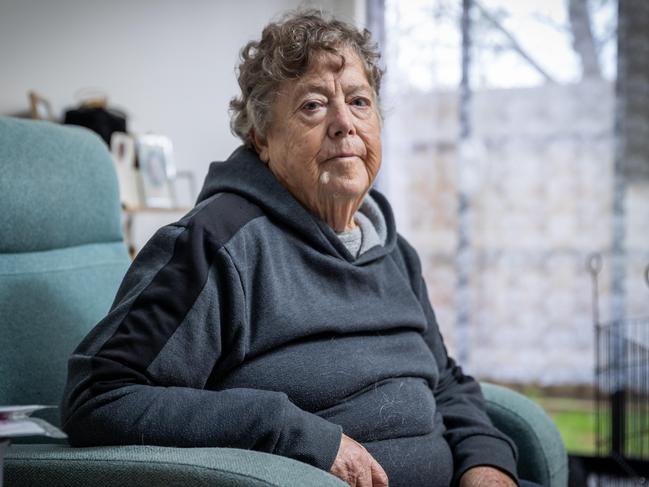Australian power prices: How your state compares to the world
New analysis of power prices shows electricity costs per kilowatt in Australia now eclipse the average in the United States. See how your state compares.
National
Don't miss out on the headlines from National. Followed categories will be added to My News.
Australian electricity prices are now among the highest in the world, with more pain to come after regulators approved a hike of up to 25 per cent for people on default plans.
Analysis of power prices shows that as of this month, electricity costs per kilowatt in all the eastern states and territories now eclipse the average in the United States.
And electricity in our two priciest jurisdictions, South Australia and the ACT, is now more expensive than in the UK.
More pain is ahead for people on so-called default offers after the energy regulator last month approved bill hikes of up to 25 per cent – increases that are likely to put upwards pressure on prices in the rest of the market.
Consumer advocates say the soaring bills are a major source of financial pain for people struggling with the cost of living, and disconnection can leave vulnerable people with a fridge full of rotting food or unable to contact medical providers on the phone.
The Consumer Action Law Centre’s head of electricity policy, Luke Lovell, said more people needed to be able to claim a concessional rate and more states should follow the lead of Victoria, which hands out grants of up to $1300 to people struggling to pay unexpected large power bills.
He said problems with electricity bills were consistently among the top five reasons people rang CALC for help.
“Looking at the data that we’ve had recently, through the first four months of the year, 10 to 12 per cent of people contacting us are calling about energy debts,” he said.
“And that’s pretty consistent over a period of time as well.”

He said people often needed help understanding their right to be put on a payment plan or freeze the payment of arrears for six months.
“Over time we’ve seen less disconnections, which is obviously a positive, but we still see a lot of people being put on unaffordable payment plans to manage their debts, or retailers failing to inform people about things like the utility relief grants, government grants that would help them reduce their debts,” he said.
He said having the power cut off could have “devastating impacts” on vulnerable people.
“We’ve definitely heard issues around people with a fridge full of fresh fruit that spoiled,” he said.
“I remember a client who was dealing with mental health challenges who woke up to their power cut off and called us because they were really concerned about their phone running out of charge not being able to make a telehealth appointment that afternoon.”
Tammy Barton, the chief executive of budgeting service MyBudget, said she was seeing “an unprecedented level of enquiries” from people due to the cost of living crisis.
“The majority of our clients are above average income earning families with good incomes, good jobs; these pressures of inflation, rising cost of living and interest rate rises do not discriminate.”
News Corp analysed electricity prices based on government figures for average household electricity usage and bill size.
The analysis show that at 36.1c/kWh, South Australian electricity is the most expensive in the country, while NSW’s was the cheapest at about 26.5c/kWh.
All Australian states and territories were more expensive than the US, where electricity costs about 22.6c/kWh.
South Australia and the ACT, where electricity costs about 29.8c/kWh, were more expensive than the UK, where power costs about 30.8c/kWh.
Europe, where electricity prices have rocketed due to Russia’s invasion of Ukraine, was more expensive than anywhere in Australia.
Across 27 European countries the average price of electricity was about 45.7c/kWh.
’WORE THE SAME SHOES FOR FOUR YEARS'
No new shoes and no eating out – these are the sacrifices needed to keep up with soaring power bills endured by citizens of Melbourne.
Melbourne, Florida, that is.
But as painful as power bills are in the small seaside city, which sits north of Miami and southeast of Orlando, electricity prices are even higher in Melbourne, Australia.
The average electricity price in the US is about 22.6c/kWh, compared to a recent high of about 27.95c/kWh in Victoria.
This is even though the Russian invasion of Ukraine has pushed up prices in the US – the price of gas, which is used to generate a lot of Florida’s electricity, is linked to an oil price that jumped upwards as tanks crossed the border last year.
De’ona Bonsiero, a married 27-year-old mother-of-two who works full time as a cashier at a seafood restaurant, has lived in Melbourne, Florida her entire life. Her family is two adults and two children.
“About five years ago my electricity bill would be about $US175-180 per month, it never passed $US200,” Ms Bonsiero said.
“Now it’s about $US275-$350.”

One of the more extreme measures she said she took to adjust to rising costs was to “wear the same shoes for four years”.
“I had two pairs: one for work and one for outside … I just kept them maintained so I didn’t need to buy new ones,” she continued.
For a while, her family stopped eating out and instead collected food boxes handed out by local churches.
According to Ms Bonsiero, she even had three jobs at one stage and clocked 109 hours in a week, just so she could afford flooring and windows in her mobile home.
“I just know the cost of living is going up and the pay is going up a little but it doesn’t match so you have to work to death,” she said.

Meanwhile, in Melbourne, Victoria, 79-year-old pensioner Betty May says she’s cut down on heating to try to save money in the face of power bills that she feels have jumped by 50 per cent.
She lives in a unit in Broadmeadows with her daughter Bronwyn and their two dogs – her two-year-old Jack Russell Maggie (named after the football team) and Bronwyn’s six-month-old pug, Marlee.
“I’m sitting with a real thick hoodie on until I go to bed at night, to save power,” Ms May said.
She said that even though she prepaid her utilities, putting aside $20 a month for power and the same for gas, it was still a shock when big bills arrived.
“Sometimes it’s $300 or $400 when the power bill comes in, on top of what I’ve paid in advance,” she said.
“That’s why I struggle.”
She said she economised as much as she could when shopping for groceries.
“For example, in meat I look for the cheaper cuts.”
However, power bills were unavoidable.
“Power and gas and water are essential,” she said.
“You can’t live without it.”
More Coverage
Read related topics:Cost Of Living




